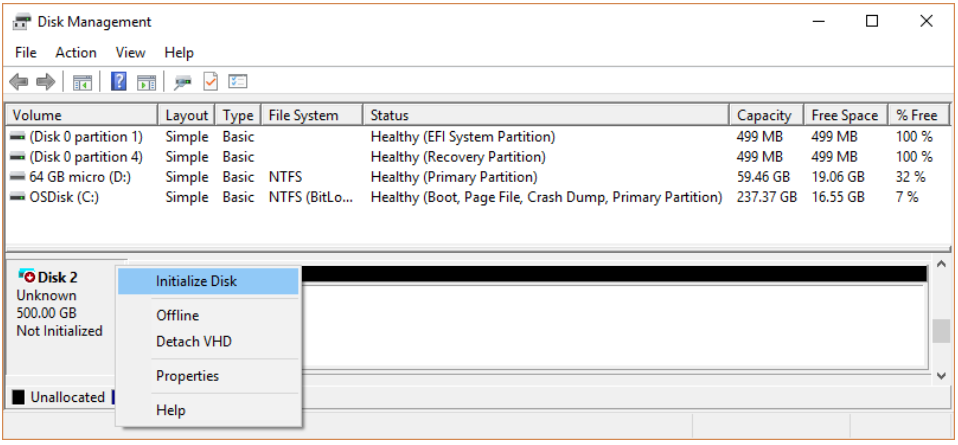

- Softraid cannot initialize drive how to#
- Softraid cannot initialize drive driver#
- Softraid cannot initialize drive windows 8#
Consider creating one volume the whole size of the disk.
Next, follow the on-screen wizard for the New Simple Volume:Ĭhoose the disk space of the volume. Right-click the unallocated sector, and click the New Simple Volume option. You may notice the drive is recognized as unallocated. Once the disk is initialized, it appears on the disk management screen as shown:. This avoids problems when cloning the SSD. If you are setting up the Intel® SSD to clone your existing drive, make sure you choose the partition style that matches your current drive. For an Intel® Optane™ memory module for system acceleration, select GPT. As a reminder, GPT is newer, allowing more partitions and bigger drive sizes for drives that are larger than 2TB of capacity. To finish initializing the disk, choose a partition style for the disk. Open the disk management from the run box or the quick link access menu to see a pop-up similar to this screenshot:. Softraid cannot initialize drive windows 8#
Windows 8 and later users can also use the Windows logo key + X combination and use the quick link access menu:. It should look similar to this screenshot: In Windows 7, 8, 8.1, and 10 you can open a Run box by pressing the Windows logo key + R and then type the command: diskmgmt.msc. The drive must be initialized first in the operating system in order to be seen by it and open the wizard. Once the SSD is connected, you may notice that Windows doesn't open the plug-and play wizard. Connect your Intel® SSD via a SATA cable:. Otherwise, Windows does not detect the SSD.įollow these steps to initialize an Intel® SSD in Windows environments: Noteįor this example, we are showing SATA and USB connected drives. The Microsoft* NVMe driver can be applied. Softraid cannot initialize drive driver#
Use the NVMe driver for Intel® SSD's - Some products may not be supported, confirm in the driver release notes for specific support. You need to do nothing if you are using an OS with a native/inbox driver, such as Windows 8.1* and Windows® 10. In cases where the Intel® SSD uses the PCIe NVMe interface, you need to have an NVMe driver installed in the OS before proceeding. These steps also apply for the NVMe* consumer and data center models. These steps work for SSDs that are connected to a SATA port, M.2 slot, or a PCIe* slot. Softraid cannot initialize drive how to#
This article explains how to initialize an Intel® SSD in Windows*, whether it is new or securely erased before.





 0 kommentar(er)
0 kommentar(er)
